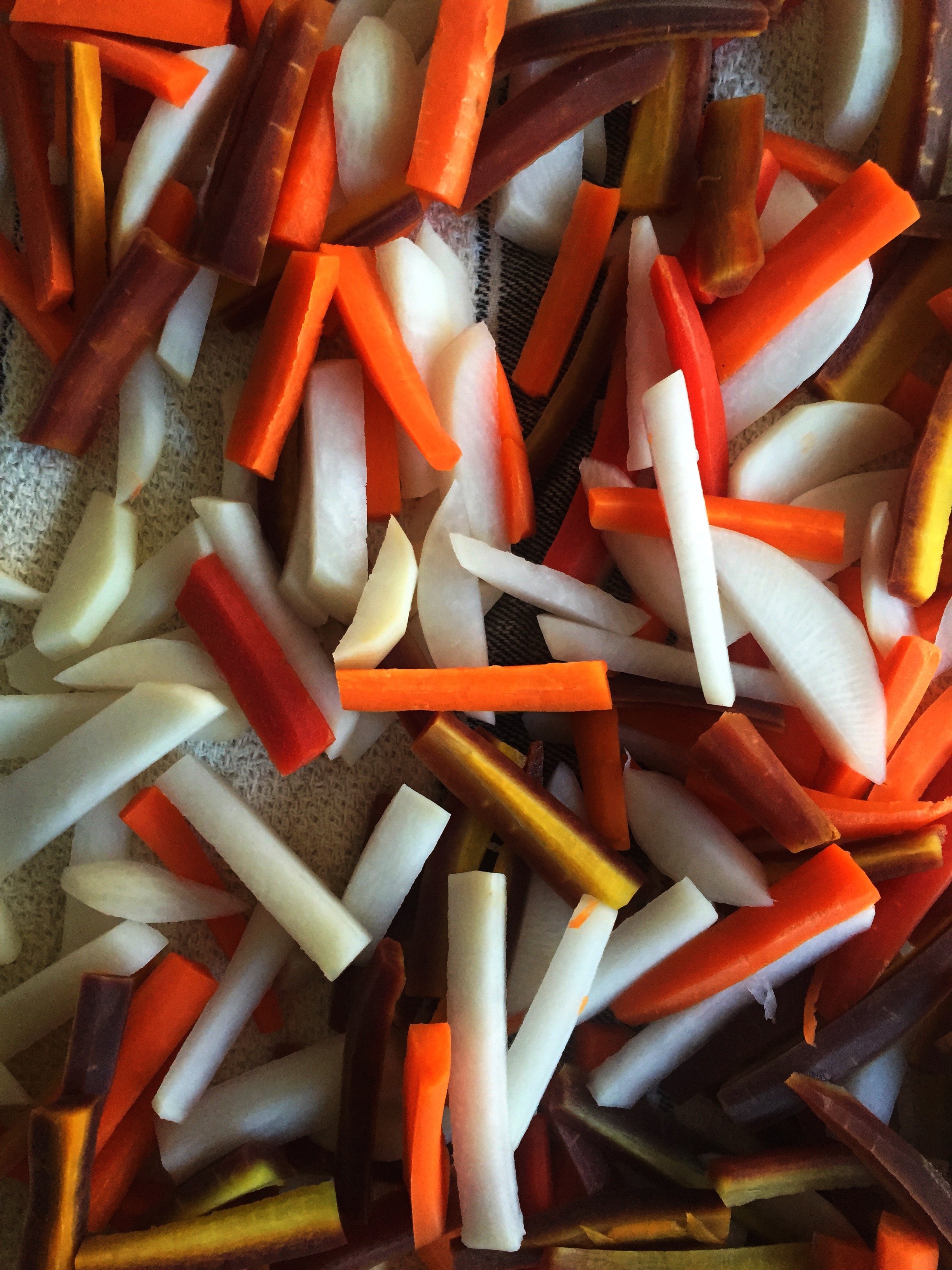The Anatomy of a Pickle
In Indian cuisine, mind-bogglingly diverse as it is, a pickle is present at every meal, no matter how elaborate or frugal the circumstance. It may even take the place of sides, making the meal complete with just the addition of a grain like cooked rice or bread, some plain yogurt and not much else. While the intent is to up the ante of the meal in terms of flavor and heat thus rendering the food amenable to all palates at the table, a pickle can also be medicinal making the meal itself more digestible, maybe settling an upset or queasy tummy, or even adding a much needed immune boost.
The ‘pickle’ could be a fruit, vegetable, or a combination thereof, or even smallish fish or other animal-sourced components. These could then be used raw or cooked, marinated in salt and spice, most significantly cayenne pepper, cured with an acid medium like vinegar or lemon juice if the main ingredients lack it, and preserved in oil. A pickle commonly has a telltale color – shades of orange to red from the cayenne! And although there are a myriad versions depending on region and season, one can recognize a jar of pickle on the table pretty easily. I say usually because pickles need not use cayenne, instead relying on heat from ginger, fresh green chilies, or fresh peppercorns and hence not have the striking red color. There are pickles that are shelf stable for years, curing and becoming tastier as they age; and then there are some meant to be consumed in days, needing refrigeration.
Cauliflower-Turnip-Carrot winter pickle
The anatomy of a pickle? Main ingredients + Salt & Spices + Optionally ~ Acidic medium and Oil

Nothing says winter on an Indian plate like a seasonal pickle and this one is a personal favorite. It showcases three of early winter’s fresh vegetables and by curing and preserving them one is able to enjoy them as the season deepens. There are many recipes to be found online – I condensed several into a version I used for mine. One key substitution is lemon juice instead of white vinegar – it may have altered the shelf life but I don’t eat vinegar and honestly, I don't think this batch will last long :-)
Ingredients
2 cups of white turnip batons and 2 cups carrot batons (3-4 medium sized turnips, and 8-10 medium sized carrots, washed, trimmed, peeled and sliced into batons; I love the bag of multi-colored carrots that are now available at my local grocer; I avoided using the yellow carrots because I find they discolor easily upon peeling).
1 head cauliflower, separated into florets and washed well
Seasonings
4 heaping tablespoons crushed dry mustard (I just ran yellow mustard seeds through a coffee mill) Powdered cayenne pepper and sea salt to taste1 heaping tablespoon powdered turmeric6 tablespoons of raw coconut palm sugar½ - 1 cup lemon juice1 cup of virgin expeller pressed sesame oil to coat and cover the veggies in the jar
Powdered cayenne pepper and sea salt to taste1 heaping tablespoon powdered turmeric6 tablespoons of raw coconut palm sugar½ - 1 cup lemon juice1 cup of virgin expeller pressed sesame oil to coat and cover the veggies in the jar
Method
Heat water in a large pasta pot to a rolling boil and shut off heat; add all vegetables and blanch for 1 minute; drain well; spread several kitchen towels on a counter or tabletop. Pour the veggies onto the towels, spreading them out into a single layer to blot and air dry for the next several hours, even up to a day to make sure there is no moisture at all. It is customary to let the veggies dry in the winter sun outdoors.
Heat the oil in a pan and add in all the spices; toast for minute or two; shut off heat. 
Take the fully dried vegetables in a large clean, dry bowl. Add the seasoned oil to the vegetables along with the lemon juice, salt, and sweetener. Toss well with a clean spoon to coat.
Cover and keep on the counter for a few hours, tossing often.
Remove into sterile glass jars.
Store in the fridge and allow the pickle to cure for a couple of days, tossing the jar whenever you open the fridge.
Use sterile utensils to spoon out the pickle – to avoid spoilage, it is best to pour out some into an everyday jar and refresh as it empties. Enjoy as an accompaniment to any meal!
